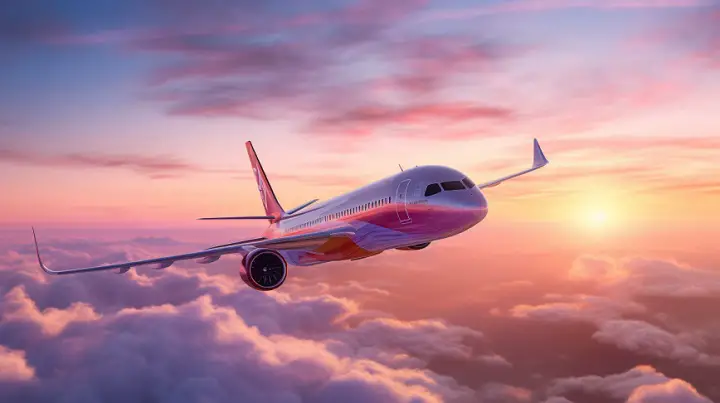
Flying Car Challenges: Strategies For Future Adoption
Flying cars, also known as air taxis or vertical take-off and landing (VTOL) aircraft, have long been a vision of the future. While this technology is still in development, many companies are working to make flying cars a reality within the next 5-10 years. However, there are substantial challenges to overcome before flying cars can be widely adopted. This article will examine the key obstacles facing flying car adoption and potential strategies to facilitate their integration into society.
Technical Hurdles
Developing safe, reliable flying cars presents formidable engineering challenges. Aerospace companies must create aircraft that are efficient, quiet, and easy to operate, while meeting rigorous safety standards.
Battery Technology
Most flying car designs rely on electric propulsion to reduce emissions, noise, and operating costs compared to conventional combustion engines. However, current battery technology severely limits the range, payload capacity, and power output of electric aircraft. Lithium-ion batteries with much higher energy density will be required. Solid-state batteries are a promising technology but still years away from commercial viability.
Flight Control Systems
Advanced computerized flight control systems are needed to maintain stability and enable autonomous flight. These must account for the complex aerodynamics of VTOL vehicles transitioning from vertical lift to forward flight. Redundancies and fail-safes must prevent catastrophic system failures.
Noise Reduction
Flying cars will operate closer to people than commercial airliners, so minimizing noise pollution is critical for community acceptance. Lift fans, propellers, and motors must be carefully engineered for low noise. Aerodynamic designs can direct noise upward away from bystanders.
Safety and Reliability
Strict safety standards analogous to commercial airliners must be met. VTOL aircraft have more points of failure than traditional fixed-wing designs, requiring redundant systems and robust emergency backup plans. Preventing component failures through rigorous testing and maintenance will be paramount.
Weather Tolerance
Unlike airliners, flying cars will operate in low altitude airspace, exposed to disruptive weather elements like rain, snow and wind. Aerodynamic and propulsion systems must be adapted to handle a variety of adverse conditions. Degraded performance in bad weather could limit operational availability.
Vehicle Cost
For widespread adoption, flying cars must eventually achieve mass-market affordability comparable to luxury cars. Current prototypes cost several million dollars due to bespoke design and niche manufacturing. Economies of scale from larger production volumes can help drive down costs over time.
Infrastructure Needs
Developing takeoff and landing infrastructure for flying cars poses major logistical obstacles for cities. Suitable VTOL port (vertiport) networks must be built to enable convenient, efficient regional transportation.
Vertiport Design
Vertiports need compact footprints to mesh with urban spaces. They must include charging stations, maintenance facilities, parking spots, and integration with ground transport. Vertiport capacity must scale to match projected flying car demand without congestion.
Vertiport Placement
Optimal locations will provide quick access to major residential and business districts. Rooftops of buildings, parking structures and unused lots offer many possibilities. Placement may spur redevelopment of underutilized space. Approval processes for such infrastructure should be streamlined.
Curbside Vertiports
Some concepts involve small portable or floating vertiports that can be temporarily deployed on roadsides. This would enable on-demand takeoff and landing almost anywhere, albeit with reduced capacity. It may allow more flexibility during early phases of deployment.
Emergency Landing Options
In the event of emergencies, flying cars will require alternate landing sites to safely touch down. Networks of designated emergency landing zones, including highways, fields and rooftops, may need to be established.
Air Traffic Management
As flying car numbers scale up, air traffic management systems will be needed to coordinate and monitor all these low-altitude vehicles. This likely involves an expanded role for the FAA and local air traffic controllers. Digital tracking and automation will be critical for safety and efficiency.
Weather Monitoring Infrastructure
Sophisticated weather monitoring and forecasting systems tailored to VTOL operations must be developed. High-resolution local wind and precipitation data will help identify hazardous conditions so flights can be rerouted. Such data can also feed into flight control stability systems.
Charging Infrastructure
Widespread charging stations at vertiports and other public places will be needed to extend flying cars’ limited range, prevent stranded vehicles, and support high-demand routes. Standardized charging interfaces must be established.
Public Policy and Regulation
Flying car deployment involves complex policy issues spanning multiple sectors and levels of government. Lawmakers and regulators have pivotal roles in enabling adoption.
Updated Aviation Policies
The FAA must establish new airspace management policies, safety certification standards, operational rules, and air traffic control procedures appropriate for high-density, low-altitude flying car operations. Seamless integration with traditional aviation is critical.
Infrastructure Policy
Local governments must develop land use and zoning policies to facilitate infrastructure development for vertiports, charging stations and emergency landing areas. Streamlining bureaucratic obstacles will help scale infrastructure.
Community Engagement
Flying cars may face public skepticism and opposition without sufficient community outreach. Developers should proactively inform local residents, solicit input, and address concerns about safety, noise and privacy early on.
Liability Laws
Insurance frameworks and liability laws pertaining to flying cars need clarification at federal and state levels. This includes laws around safety requirements, accident investigations, passenger rights and manufacturer responsibilities.
Training Requirements
Required pilot training and operating licenses must balance accessibility with safety. Extensive training could inhibit consumer adoption, while lax standards may endanger passengers and bystanders. Graduated licensing approaches, akin to cars, should be considered.
Data Privacy and Security
As tracking-equipped autonomous aircraft, flying cars raise concerns around data privacy and cybersecurity. Governments must develop appropriate protections against surveillance, hacking and data misuse without hindering benefits.
Environmental Regulations
Local noise ordinances, emissions limits, and other environmental regulations will impact flying car operations. Governments should develop science-based policies minimizing community disruption without overburdening the emerging industry.
Societal and Market Challenges
Even if the technology advances, public skepticism plus questions around profitability could hinder flying car adoption. Developers and policymakers should proactively address these issues.
Consumer Trust
Many people may resist entrusting their lives to autonomous aircraft systems. Anxiety over safety and reliability could undermine public acceptance. Developers must conduct extensive demonstration flights to build consumer confidence over time.
Affordability for Consumers
For widespread appeal, operating costs of flying cars must decrease to affordability ranges of tens of dollars per ride. Production scale and technology gains should drive down costs, but vehicles may require subsidies during early deployment.
Profitability for Companies
With high R&D costs, unproven markets and long certification timelines, the profit case for flying cars is uncertain. Public subsidies and partnerships may be needed to incentivize private investment until scales grow sufficiently large.
Pilot Shortages
There may be insufficient trained pilots to operate projected flying car fleets, especially remotely piloted variants. Developer-funded pilot training programs can help expand the qualified labor pool. Autonomous capabilities will also help mitigate this issue.
Insurance Availability
Insurers today classify most flying cars as high-risk experimental aircraft with extremely high premiums. As more data on reliability and safety emerges, actuaries should develop mainstream insurance products at attractive rates.
Public Enthusiasm
A sizable portion of the population may actively oppose introducing flying cars to their communities. Developers should conduct extensive outreach to mitigate not-in-my-backyard (NIMBY) opposition. Demonstrating concrete local benefits will help.
Paths to Adoption
Despite major hurdles, recent technological progress makes a path feasible for flying cars to evolve from concepts to early adoption within five to ten years.
Innovation Zones
Clusters of vertiports could be established within discrete zones like a city or region to demonstrate and refine concepts at scale. This concentrates resources while limiting risk exposure. Data and experience gained can inform wider deployment.
Targeting Early Adopters First
Wealthy individuals and tech enthusiasts drawn to novelty provide early market demand. Their higher risk tolerance and ability to pay premium prices helps sustain the initial launch phase. As capabilities improve and costs drop, the market can expand to the affluent mainstream.
Cargo and Logistics Services
Commercial package delivery services using flying cars may debut earlier than passenger flights. Lower safety barriers and the high value of speedy delivery times bolster this market segment. Cargo services generate revenue while proving core capabilities.
Transit Networks for Major Cities
High-density urban areas plagued with traffic could support between-vertiport shuttle services targeted at commuters and business travelers. This provides a financially viable operational model while serving community mobility needs.
Remote Region Connectivity
In rural areas lacking transit options, small VTOL aircraft may provide cost-efficient passenger and cargo links between outlying towns and central hubs. Such services require lower infrastructure investment while connecting underserved communities.
Final Thoughts
Realizing the flying car future will require overcoming substantial technology gaps, infrastructure challenges, policy issues, and market uncertainties. With prudent strategies focused on early use cases, limited deployments in innovation zones, and rigorous safety protocols, many hurdles can be cleared over the next decade. This could set the stage for more widespread adoption by 2030 to 2040 as technologies mature and scale expands. Given society’s long-held dream of flight made personally accessible, efforts to responsibly develop flying cars are well warranted.
Frequently Asked Questions
How much will flying cars cost for consumers?
Most experts estimate flying cars will cost $200,000 to $500,000 when first introduced, limiting buyers to the ultra-wealthy. By the 2030s, prices may drop to $100,000 as production scales up. Not until the 2040s or beyond are flying cars projected to become affordably mainstream at price levels around $50,000.
How energy efficient will flying cars be?
Early battery-electric flying car prototypes are 2-4 times more energy efficient per mile than conventional cars. Further advances in electric propulsion technology combined with aerodynamic airframe designs could increase efficiency to 5-7 times that of today’s cars by around 2035.
How fast can flying cars travel?
Maximum cruising speeds for most proposed flying car designs range from 150 to 220 mph, which is 2 to 3 times faster than today’s cars. However, near urban areas, flying cars will likely be limited to slower speeds under 100 mph by air traffic controllers for safety.
How far can flying cars fly on a single charge?
Current prototypes have ranges around 200-300 miles, but range is expected to double to 400-600 miles by the 2030s thanks to advancing battery technology. Quick-charging at vertiports will help extend trips beyond battery range limits.
How weather proof will flying cars be?
Flying cars will need to operate in all climates. Engineers are designing stability and control systems to handle moderate turbulence, rain, snow and other inclement weather. However, severe storms may still limit availability periods or force rerouting and groundings.
How safe will autonomous flying cars be?
Developers aim to achieve ultralow failure rates of less than 1 per 100,000 flight hours – on par with commercial airliners today. Redundant systems, parachutes and autonomous avoidance maneuvers will provide backup protections to meet rigorous safety targets.
How much noise will flying cars emit?
Electric propulsion will make flying cars much quieter than today’s helicopters. Engineers aim for noise levels comparable to road traffic when taking off and landing. At cruising altitudes a few thousand feet up, they will be nearly inaudible from the ground.
How long will it take for flying cars to become mainstream?
Most experts anticipate a gradual process taking 20 to 30 years for widespread adoption. This allows for technology maturation, infrastructure build out, policy development, and public acceptance. Affordable models likely won’t dominate markets until the mid-2040s at the earliest.
How many jobs will flying cars create?
Estimates project that scaling up manufacturing, operations and maintenance for flying cars could directly create over 150,000 new jobs worldwide by 2035. Many more indirect jobs in supporting industries like batteries, software, infrastructure, and insurance will also emerge.
Will flying cars completely replace road cars?
Not entirely. For affordable local and regional travel, flying cars will complement rather than fully displace ground-based cars. Door-to-door autonomous electric ground cars will continue meeting many transportation needs efficiently. But flying cars will open new possibilities for longer-range travel.






